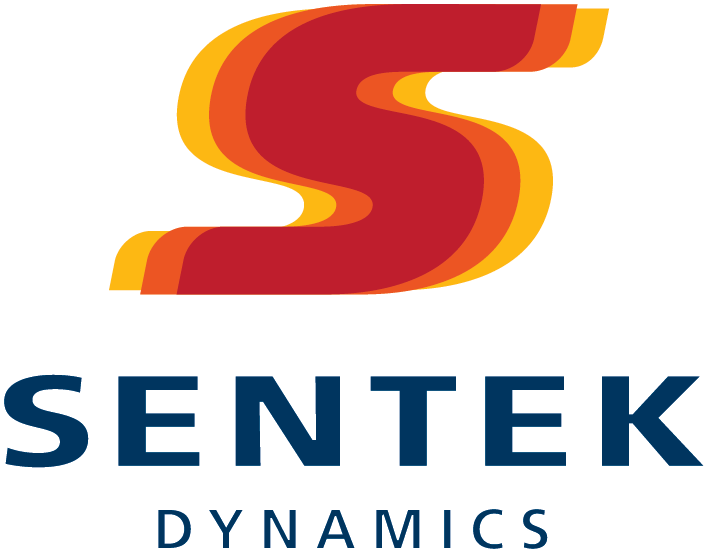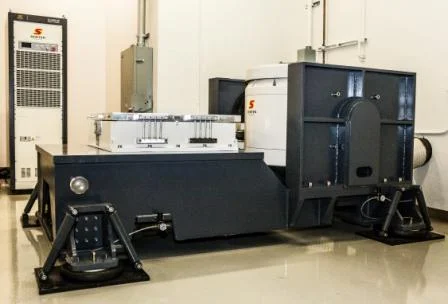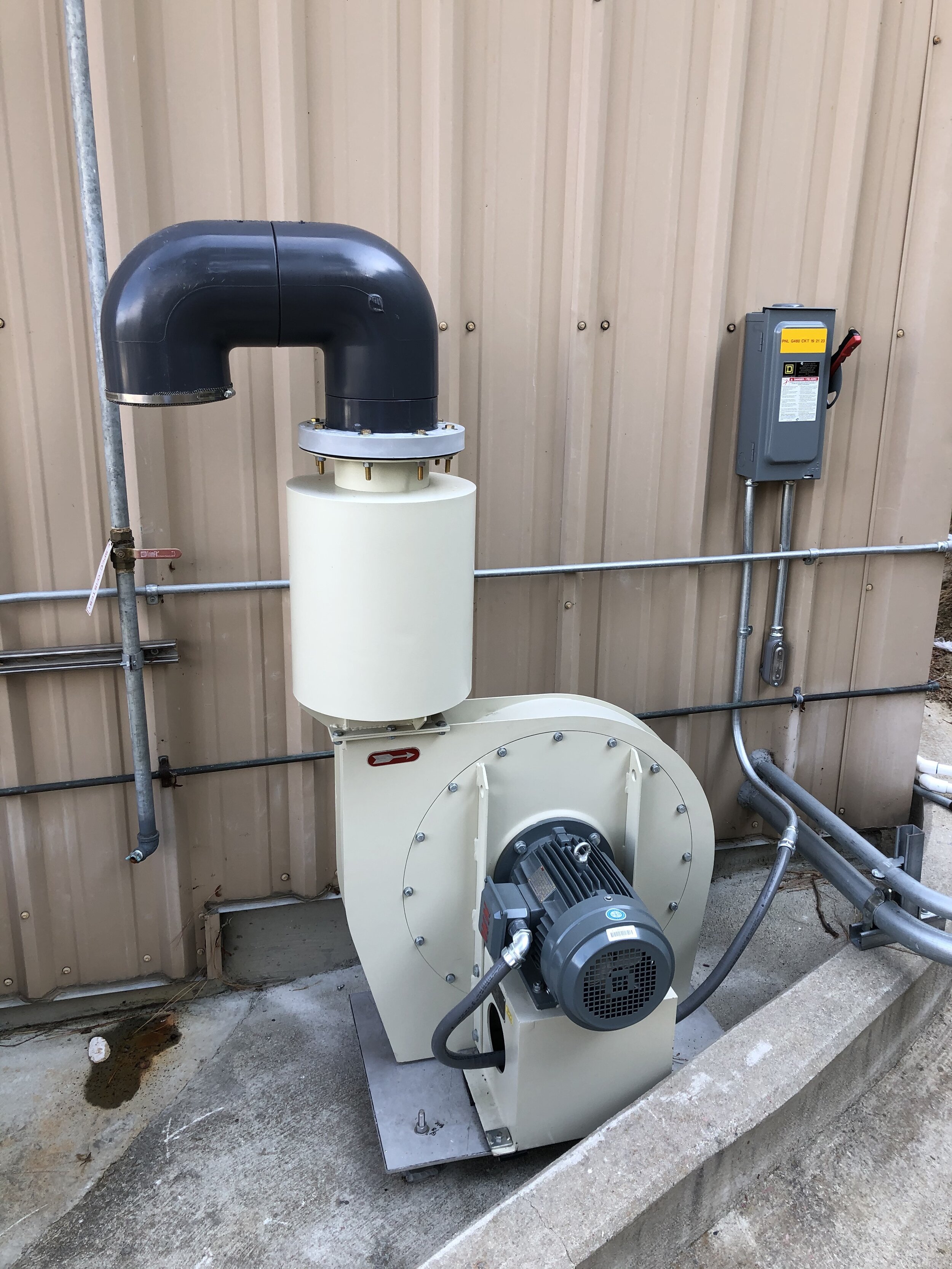Multi-Sine is a new type of Sine test which facilitates multiple sine tones sweeping simultaneously at once. In automotive testing, engine mounted components such as fuel lines, turbos, headers, sensors, heatshield… are all subjected to high vibration levels during their operational life cycle. High cycle fatigue testing of engine mounted components is often done with a standard Swept Sine test. By performing a Swept Sine test, all resonances within the frequency ranges are excited and measured.
Read moreEarthquake Testing on a Three-Axis Shaker System
Earthquake testing is a crucial process that is used to determine the seismic performance of a structure. The utilization of a physical testing method helps users better understand the complexity involved in earthquake forces. A shaker table is typically used to execute a physical method of testing. The results from earthquake testing are used to optimize the design and material properties of the unit under test.
Read moreMulti-Resolution Application in MIMO Sine Control
Multiple-Input Multiple-Output (MIMO) vibration testing has increased in popularity as a result of the development of multiple shaker table systems and the availability of MIMO vibration controllers. The readiness of standards such as Mil-STD 810G Method 527 and the IEST DTE 022 Working Group Recommendation have also contributed to the huge momentum MIMO testing has gained in the past decade. Military and defense manufacturers are not the only industries adopting multiple shaker testing. Manufacturers in aeronautic, space, automotive, and the commercial electronics industries are also benefiting from the advantages of multiple shaker testing systems.
Read moreMIMO Control Null Test on Three-Axis Shaker Systems
Single axis vibration control tests are widely used to qualify the behavior of the unit under test (UUT). If the UUT passes the test requirement then it provides confidence about the sustainability and durability of the test structure. However, sometimes excitation in multiple directions is required to test the robustness of the UUT which has led to the wide use of Multiple-Input Multiple-Output (MIMO) testing for the programmed test profiles. It is therefore important to make sure that the hardware setup allows for the unit to be tested in various configurations of single axis, dual axis, or three-axis. However, it takes long hours to manually change the setup because of the components (shaker setup, slip table, driving bar, fixture, etc.) involved.
Read moreDual Excitation Shaker Push-push Testing
Dual excitation shaker systems are commonly used to test long or heavy devices under test (DUT). When the device under test is very long or too heavy, a single shaker cannot perform the test because of oversized dimensions or a large driving force. Thus a dual excitation shaker system is arranged as the solution. Users can fix the longer sized or heavy DUT horizontally or vertically on top of a dual excitation shaker system. Common arrangements are horizontal push-push, push-pull, and vertical.
Read moreThe Benefits of Regularly Scheduled Preventive Maintenance
Preventive maintenance is maintenance that is performed on operating equipment to ensure optimum performance and reduce the likelihood of a failure at an inopportune time. Maintenance strategies for electro-dynamic vibration testing systems (shakers) range from reactive (run to failure) to predictive maintenance, where the aim is to predict failures before they occur. Regularly scheduled maintenance, a.k.a. preventive maintenance, lies between reactive maintenance and predictive maintenance and offers numerous benefits in cost, and system reliability and performance.
Read moreUnderstanding the Frequency Signature of a Head Expander
Head expanders are commonly used for vertical environmental testing. The purpose of the head expander is to extend the surface area of the shaker top to accommodate units under test (UUTs) with large dimensions for mounting and testing. One of the key parameters is the working frequency range associated with each head expander. The upper frequency is often used instead of the first resonance frequency of the head expander in vibration control tests.
Read moreTrade-in and Installation of 65 kN Vibration Testing System
Have your vibration test equipment needs changed? Do you need a bigger system? Perhaps a slip table with higher resistance to pitch, roll and yaw moments.
Read moreThe Unique Advantages of Simultaneous 3-Axis Vibration Testing
Simultaneous 3-axis testing has several unique advantages compared with vibration testing in one axis at a time. The primary advantages include, but are not limited to, the ability to reproduce a real-world environment identical to what the product sees in the field, and significant setup and test time savings compared to individual single-axis testing.
Read moreRelocation and Recommissioning of a 6 kN [1340 lbf] Shaker
In June 2020, the Sentek Dynamics’ Field Service Team completed a relocation and recommissioning service on a model L0620M-PAS106-LST400M/AAC/AIF/DMF vibration testing system.
Read more






